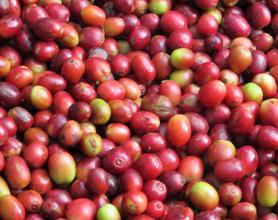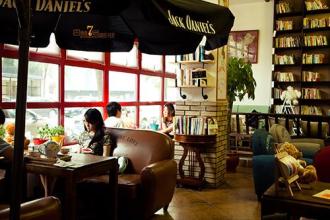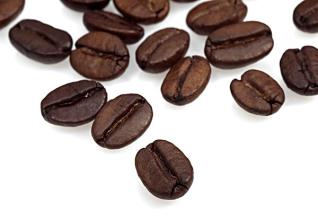Description of the flavor of Brazilian coffee beans introduction to the characteristics of manor varieties produced by grinding scale treatment
Description of the flavor of Brazilian coffee beans introduction to the characteristics of manor varieties produced by grinding scale treatment
Brazil's economy is now less dependent on coffee, which accounts for only 8% of GDP and 10% of GDP. However, the country's impact on coffee around the world, especially on coffee prices, is significant, such as the two frost disasters in 1994 that caused a sharp rise in global coffee prices.
Since the introduction of coffee trees from French Guiana (Guyana) in 1720, coffee production has gradually become a science. Before 1990, the Brazilian government carried out strict monitoring of the coffee industry, with both strict intervention and price protection measures, and the state has been implementing minimum price protection measures for farmers, resulting in coffee overproduction.
Since the opening of the free market in 1990, the original Brazilian Coffee Authority (IBC) has been replaced by the National Economic Association, the country's non-investment administrative body, which pursues a policy of non-interference and allows producers to negotiate directly with exporters. The business activities of exporters are regulated by government legislation, and the relevant departments register legitimate exporters.
Another kind of coffee that is interesting and worth looking for is washed Bahia coffee. This kind of coffee is not easy to find because Brazil is the world's largest consumer of coffee after the United States, and many good coffee can only be found in its domestic market.
In Brazil, the largest producer is Robbins. This kind of coffee is sold in the supermarket. Brazil's Robucht coffee, sold under the name Conillon, accounts for 15 per cent of total production.
As there are so many kinds of Brazilian coffee in Brazil, you can't just use the word "Brazilian coffee" to include it. Like other Arabica coffee, Brazilian coffee is called "Brazils" to distinguish it from "Milds" coffee. The vast majority of Brazilian coffee is unwashed and sun-dried and is classified according to the name of the state of origin and port of transport. Brazil has 21 states and 17 states produce coffee, but four of them produce the largest, accounting for 98 per cent of national production: Parana, SaoPaulo, MinasGerais and EspiritoSanto, with the southern state producing the most, accounting for 50 per cent of total production.

Important Notice :
前街咖啡 FrontStreet Coffee has moved to new addredd:
FrontStreet Coffee Address: 315,Donghua East Road,GuangZhou
Tel:020 38364473
- Prev

El Salvador Mercedes coffee beans how to drink the characteristics of the manor region flavor description taste introduction
Salvadoran Mercedes coffee beans how to drink the characteristics of the manor region flavor description Salvadoran coffee is ranked alongside Mexico and Guatemala as the producer of Asa and Merdo, and is fighting for the first or second place in China and the United States with other countries. The highlands of origin are large coffee beans of all sizes, which are fragrant and mild in taste. Like Guatemala and Costa Rica
- Next

Description of characteristics and Flavor of Colombian Coffee beans introduction of varieties produced by taste grinding scale
Columbia Coffee Bean characteristics, Flavor description, Grinding scale production area Variety introduction Manor: Cymbidium Bolivar country of Origin: Colombia Colombia producing area: Cymbidium Huila Variety: Castillo,Caturra altitude: 1550-1700Meters treatment: washed Washed Flavor description: rich sweetness, cleanliness, balance, dark chocolate, vanilla
Related
- Detailed explanation of Jadeite planting Land in Panamanian Jadeite Manor introduction to the grading system of Jadeite competitive bidding, Red bid, Green bid and Rose Summer
- Story of Coffee planting in Brenka region of Costa Rica Stonehenge Manor anaerobic heavy honey treatment of flavor mouth
- What's on the barrel of Blue Mountain Coffee beans?
- Can American coffee also pull flowers? How to use hot American style to pull out a good-looking pattern?
- Can you make a cold extract with coffee beans? What is the right proportion for cold-extracted coffee formula?
- Indonesian PWN Gold Mandrine Coffee Origin Features Flavor How to Chong? Mandolin coffee is American.
- A brief introduction to the flavor characteristics of Brazilian yellow bourbon coffee beans
- What is the effect of different water quality on the flavor of cold-extracted coffee? What kind of water is best for brewing coffee?
- Why do you think of Rose Summer whenever you mention Panamanian coffee?
- Introduction to the characteristics of authentic blue mountain coffee bean producing areas? What is the CIB Coffee Authority in Jamaica?

